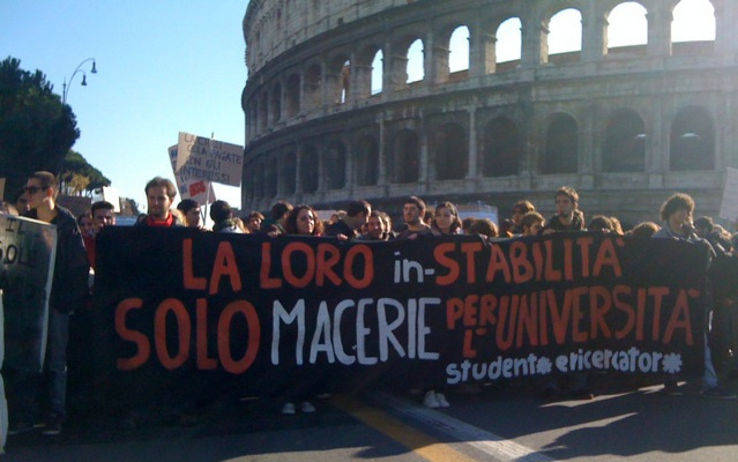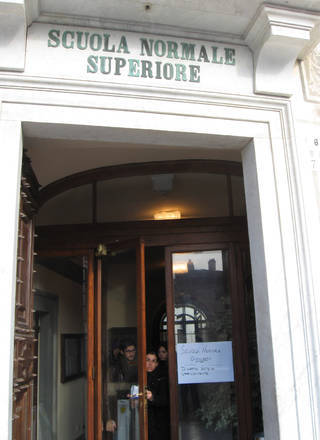From University Roofs to Monuments. Culture Protests
For the Italian academic world last week was labeled ‘high tension’. It began on Wednesday morning with the latest postponement of the House of Representative’s vote on the reform of the universities, prepared by the Minister of Education Mariastella Gelmini: the government was defeated in the House by an amendment of Fini’s Futuro e Libertà party, and the final vote won’t take place until Tuesday, November 30.
The air breathed inside and outside the political building is incandescent: the difficulties of Berlusconi’s government are not limited to the halls of power, to a series of internal party battles slowly deteriorating the majority because of the incurable fracture between the Prime Minister and his former ally Gianfranco Fini; they extend outside of Palazzo Madama and Montecitorio (that host the Senate and the House) where, for the whole of last week, university students and scholars cried out in protest from the roofs of the main universities and monuments of all over Italy.
From the Coliseum in Rome to the Tower of Pisa, from the Mole Antonelliana in Turin to the splendid Brunelleschi dome in Florence, and from the Basilica del Santo in Padua: these are just a few of the symbolic locations of Italian culture and excellence, of historic memory, that researchers and students took over to demonstrate their dissent towards this reform that they view as penalizing the Italian scholastic system.
Criticisms are aimed first of all towards the large financial cuts already in function that have plunged many universities under water, making it impossible for them to achieve the “virtuous” status that Gelmini has promised to reward. The first class universities that were rewarded, according to the reform detractors, will be forced to operate on budgets quite below international standards, with the risk of creating a general drop of the average service level of the Italian university system.
Even Bersani, the leader of the opposing Democratic Party, said he was against the reform and went on top of the roof of the Faculty of Architecture of the University of Rome together with its students, to endorse their protest: the Minister’s reaction was firm and viewed Bersani’s gesture as instigation for subversive and dangerous action; in Gelmini’s words lies the position of the majority: “How can a man who is over 50, secretary of a large party, not understand that by doing this he risks legitimizing excesses?”.
And after Bersani also Di Pietro, Vendola, Granata of Fini’s party, and other ex-members of the majority, climbed on to the roofs in support of those researchers that, because of Gelmini’s law, view as a threat the possibility of entering a University only with a first fixed-term contract of four or five years, a second of three years, but that if after this period this work didn’t become a definitive collaboration the job would be definitively terminated.
The students, those who are really paying the price of this blocked situation, did what they could and demonstrated their deep fear that these financial cuts might seriously undermine the freedom of choice and studies, entrusting private investors with the autonomy that should be given to the public, to reach a common good: the voices of dissent, democratic, legitimate and indicative a true freedom of speech, though, should not be exploited, but deserve a careful reflection in political and institutional contexts.
Is climbing onto roofs helpful to the students? The battle that is taking place in Parliament is political and ideological, or perhaps there is almost no ideology left and the university reform has simply become an excuse for settling scores within the parties?




































i-Italy
Facebook
Google+
This work may not be reproduced, in whole or in part, without prior written permission.
Questo lavoro non può essere riprodotto, in tutto o in parte, senza permesso scritto.